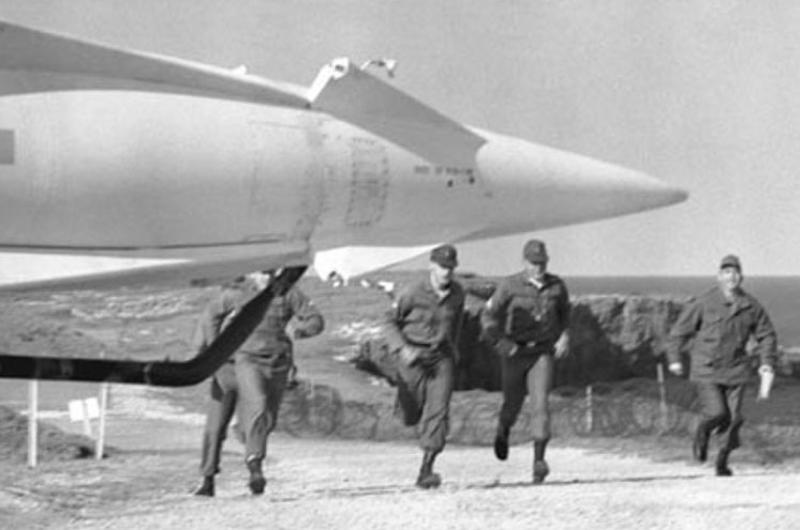Army missile units stay ready to defend skies over Okinawa

A Nike-Hercules launch crew races for its missile during an annual firing practice on Okinawa in January, 1968. (EIKOH GOYA/STARS AND STRIPES)
By FRANK HAMSKI | Stars and Stripes January 17, 1968
The big Nike-Hercules roared off its launching pad and into the Okinawa sky to signal the opening of the annual missile firing practice of the Army's 30th Arty. Brigade.
The 30th will fire Nike-Hercules and Hawk missiles until Feb. 28 to test the effectiveness and training of each of its batteries, scattered throughout Okinawa and on the offshore island of Tokashiki.
Nike-Hercules and Hawk missiles provide a protective missile umbrella over Okinawa. The brigade shares responsibility with the Air Force's 51st Fighter Interceptor Wing for the air defense of the Ryukyus.
The Nike-Hercules is a solid-propellant missile which succeeded the Nike-Ajax as workhorse of the Army's air defense system. With its booster it is 39 feet long and 31½ inches in diameter. It weighs more than 10,000 pounds.
It is directed to its target through ground-based guidance as opposed to the Hawk, which has an internal guidance system.
The Nike-Hercules has scored kills up to 150,000 feet at targets travelling more than 2,000 miles an hour. It can reach a target more than 75 miles away. It can either knock out a single aircraft or a whole flight.
This year the Firebee Towbee, a jet drone, made its debut as the target for the Hawk, a 17-foot-long, solid-fuel missile. The 22-foot Firebee is a pilotless target plane that can make sudden dives and turns from command impulses on the ground.



